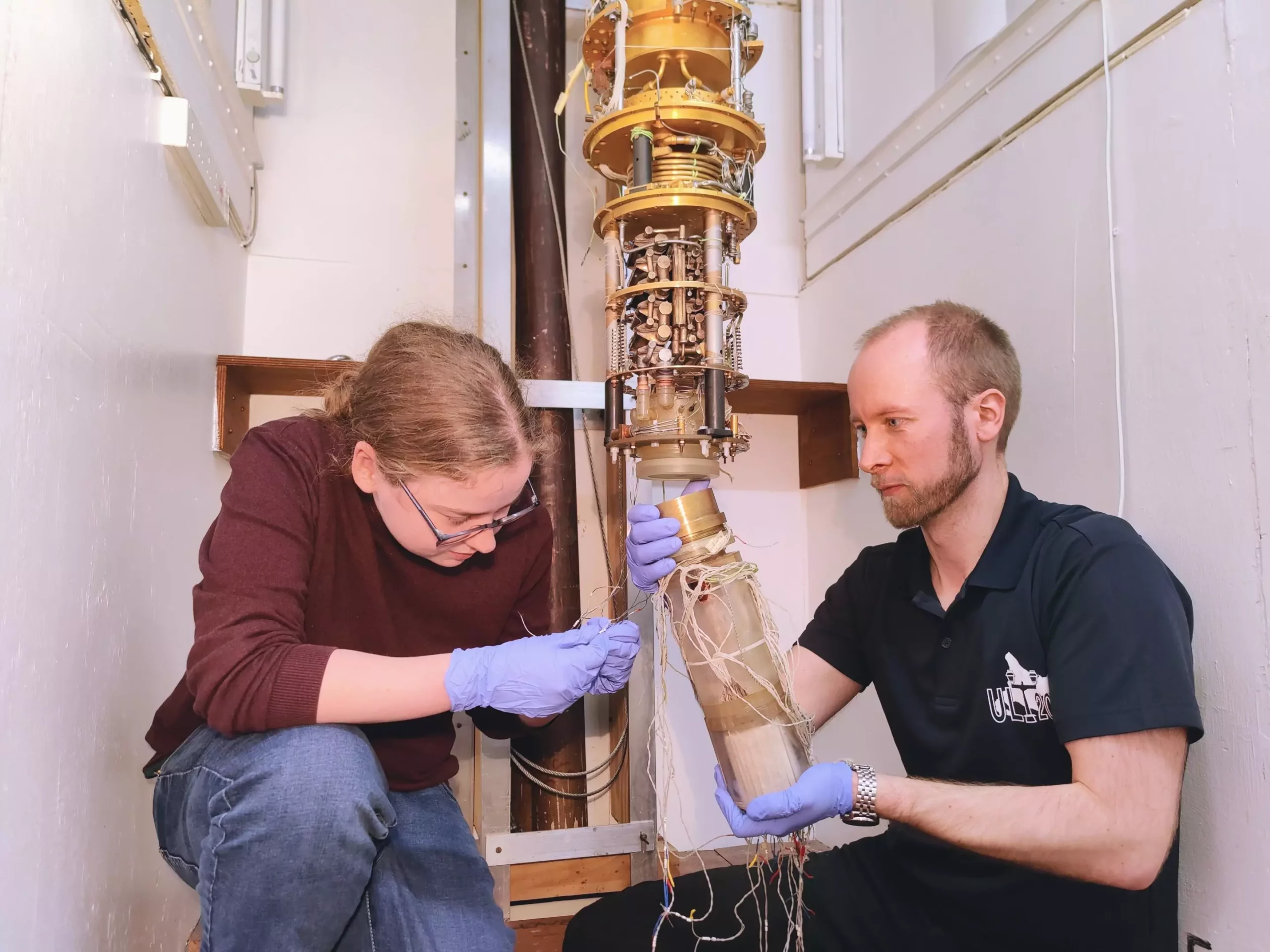The universe is composed of approximately 80% dark matter, which remains unseen to the naked eye. Scientists have been intrigued by the mysterious nature of dark matter, as it only interacts with the universe through gravity. Various experiments have been conducted to detect dark matter, but so far, they have fallen short.
Researchers from Lancaster University, the University of Oxford, and Royal Holloway, University of London are at the forefront of developing the most sensitive dark matter detectors to date. Their efforts are showcased in the public exhibit “A Quantum View of the Invisible Universe” at the Royal Society’s flagship Summer Science Exhibition. The team, led by Dr. Michael Thompson, Professor Edward Laird, Dr. Dmitry Zmeev, Dr. Samuli Autti, Professor Jocelyn Monroe, and Professor Andrew Casey, is utilizing quantum technologies to build detectors that can observe dark matter directly in the laboratory.
Particle physics theory posits two potential dark matter candidates: new particles with weak interactions and axions, which are extremely light wave-like particles. The team is developing two experiments to search for each candidate. New particles can be detected through collisions with ordinary matter, but the detection depends on the mass of the dark matter being sought. The researchers aim to detect dark matter candidates with masses ranging from 0.01 to a few hydrogen atoms using quantum-enhanced superfluid helium-3 detectors.
For axions, which are significantly lighter than a hydrogen atom, a different approach is required. Scientists cannot detect axion collisions, but they can search for electrical signals resulting from axion decay in a magnetic field. The Quantum Sensors for the Hidden Sector team is working on developing quantum amplifiers that can detect these signals with utmost precision. This innovative approach opens up new possibilities for detecting the presence of axions in the universe.
Interactive Public Engagement
The exhibition at the Royal Society’s event offers visitors the opportunity to engage with the concept of dark matter through interactive exhibits. By demonstrating how dark matter is inferred from observing galaxies, visitors can gain a deeper understanding of the elusive nature of dark matter. Hands-on activities, such as a gyroscope-in-a-box and a model dark matter collision detector, provide a tangible way for individuals of all ages to explore the mysteries of dark matter.
The research conducted by the collaborative team utilizing quantum technologies represents a significant advancement in the field of dark matter detection. By combining innovation with public engagement, the scientists are not only pushing the boundaries of scientific discovery but also educating and inspiring the next generation of researchers. The quest to unravel the mysteries of dark matter continues, and with the advancements in technology and collaboration, we may be one step closer to unlocking the secrets of the invisible universe.


Leave a Reply